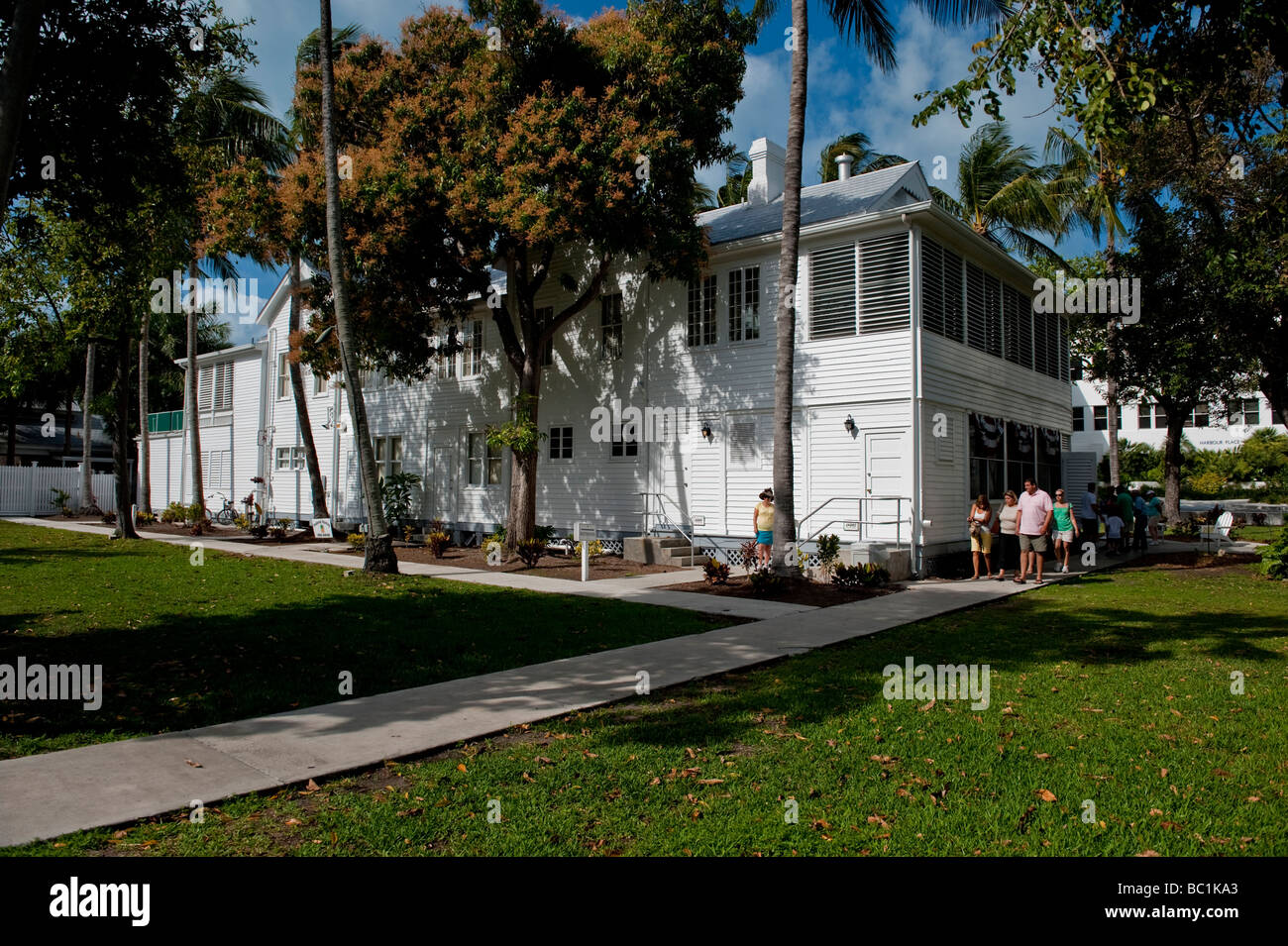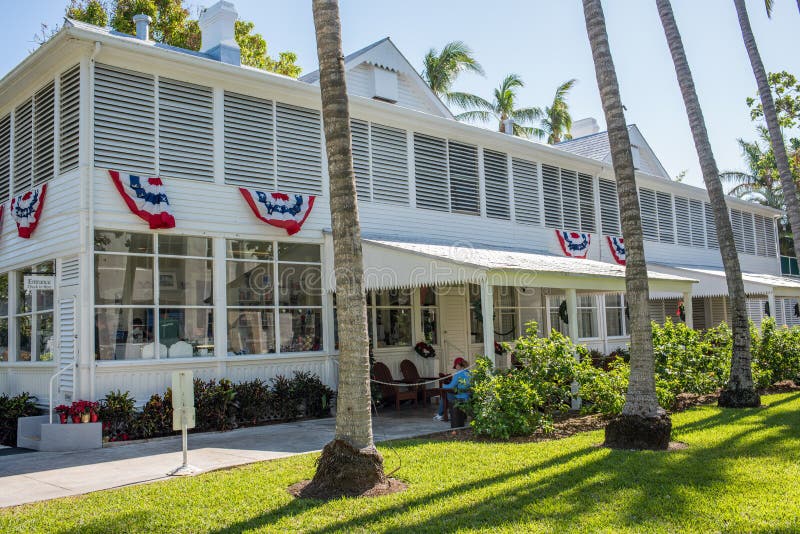Table Of Content

Originally built in 1890 as quarters for Navy Officers, the Little White House was later used by American Presidents William Howard Taft, Harry S. Truman, Dwight Eisenhower, John F. Kennedy, Jimmy Carter and Bill Clinton. Take a guided tour through the former home turned museum of President Harry S. Truman. Explore where the man of his time lived, worked, played, and held important government meetings in this delightful journey through American history. The 1950 Cosmopolitan Lincoln Limousine from President Harry Truman’s presidential fleet is now at the Little White House. The Limousine will be a part of the new White Glove Tour offered by the Little White House Museum and the Key West Harry S. Truman Foundation.
- Korean War Ends

The Truman Library is a testament to Truman’s belief in the importance of preserving history and ensuring that future generations can learn from the past. He established a Presidential Committee on Civil Rights, which recommended significant reforms to address discrimination and racism in America. Truman also issued executive orders desegregating the military and federal agencies. Truman’s support for civil rights was a significant step forward for American society, and his efforts paved the way for the Civil Rights Movement in the following years. Funds are always needed and can be designated for operations, exhibits, restoration, educational outreach, capital campaign or endowment.
A Brief History of the Little White House
President Dwight D. Eisenhower stayed at the Little White House in 1955 and 1956 during his terms in office. In the 1980s, Key West underwent a transformation and became a tourist destination, where President Jimmy Carter and President Bill Clinton sought relaxation. Between 1946 and 1952, Truman spent a total of 175 days residing and working at the Little White House.
- Truman Becomes 33rd President
The twenty-third series, Book Acknowledgements File, contains correspondence, carbon copy replies, newspaper clippings, and telegrams related to Harry S. Truman receiving books and printed materials. The writers of this mail were divided approximately 85 percent in support of President Truman. On August 10, 1978, the archivist of the United States authorized the destruction of 95 percent of this material after the remaining five percent, which had been selected by random sampling, was set aside for permanent retention. The sixteenth series, Congratulatory Letters on Leaving Office File, contains correspondence, carbon copy replies, greeting cards, newspaper clippings, and telegrams relating to Harry S. Truman leaving office of the President. The third series, the Secretary's Office File, contains correspondence, handwritten notes, greeting cards, memorabilia, newspaper clippings, photographs, memoranda, cables, speeches and speech drafts, itineraries and schedules, articles, books, and legislation. The contents of this series were segregated by Rose Conway, Truman’s personal secretary, due to their perceived importance.
The Key West Museum of Art & History at the Custom House
Often regarded as mere souvenirs for family and staff, a more careful reading reveal clues as to the working of the president in Key West. On July 26, 1948, President Harry S. Truman issued two of his most important Executive Orders, 9980 and 9981, desegregating the federal workforce and desegregating the armed forces. However, it could not be to get votes as there were not that many registered black voters. The postwar “Baby Boom” (1946 to 1964) was the largest generation in history.
Every man should have the right to a decent home, the right to an education, the right to adequate medical care, the right to a worthwhile job, the right to an equal share in making the public decisions through the ballot, and the right to a fair trial in a fair court. We must ensure that these rights – on equal terms – are enjoyed by every citizen. Many of our people still suffer the indignity of insult, the harrowing fear of intimidation, and, I regret to say, the threat of physical injury and mob violence. The conscience of our nation, and the legal machinery which enforces it, have not yet secured to each citizen full freedom from fear. The twelfth series, the Biographical File, contains correspondence, carbon copy replies, newspaper clippings, and printed materials related to Harry S. Truman’s personal and family history.
Pan Am's First Office
His legacy is notable for the significant domestic and foreign policy initiatives he implemented, as well as his dedication to service and his no-nonsense approach to politics. Truman was elected vice president in the 1944 presidential election and assumed the presidency upon Roosevelt's death in April 1945. It was only when Truman assumed the presidency that he was informed about the ongoing Manhattan Project and the atomic bomb. Truman authorized the first and only use of nuclear weapons in war against the Japanese cities of Hiroshima and Nagasaki, leading to Japan's surrender and the end of the world war. Truman's administration engaged in an internationalist foreign policy by working closely with Britain. He energized the New Deal coalition during the 1948 presidential election, despite a divided Democratic Party, and won a surprise victory against Republican Party nominee Thomas E. Dewey that secured his own presidential term.
Harry Truman's Little White House--Presidents: A Discover Our Shared Heritage Travel Itinerary - National Park Service
Harry Truman's Little White House--Presidents: A Discover Our Shared Heritage Travel Itinerary.
Posted: Tue, 29 Mar 2016 10:14:56 GMT [source]
Liked this? Take a second to support us on Patreon!
They think American standard of living is a fine thing—so long as it doesn't spread to all the people. And they admire the Government of the United States so much that they would like to buy it. Truman was raised in Independence, Missouri, and during World War I fought in France as a captain in the Field Artillery.
World War I
During the tour, you’ll learn interesting facts about the home and Harry Truman from the knowledgeable docents. Before Truman, the house played host to Thomas Edison, scientist Edward Hayden, Presidents William Taft, John F. Kennedy, Dwight Eisenhower, Jimmy Carter and Bill Clinton. During 1946 and 1952, Truman ended up spending 175 days living and working at the Little White House and today, so many years later, his presence can still be felt. This photograph, taken by Paul Begley on April 5, 1950, shows President Harry S. Truman, along with his family and staff at Key West, Florida. Regardless of whether or not you are a history buff, a tour of the Harry S. Truman Little White House is thoroughly enjoyable, especially as the passionate tour guides really bring its history to life. After that first visit, Truman returned to Key West and the Little White House again and again.
After years of depression and war, Americans, quite simply, were having more children. The baby boom was only one of the massive changes underway in the structure of the American family during the years immediately following World War II. On May 8, 1945, Harry S. Truman announced to the American public that Germany had surrendered, signaling the beginning of the end of World War II and is known as VE Day.
The main mission of the committee was to expose and fight waste and corruption in the gigantic government wartime contracts. With the involvement of the US in the Korean War of 1950–1953, South Korea repelled the invasion by North Korea. Domestically, the postwar economic challenges such as strikes and inflation created a mixed reaction over the effectiveness of his administration. Congress refused, so Truman issued Executive Order 9980 and Executive Order 9981, which prohibited discrimination in federal agencies and desegregated the U.S.
The president’s other house: A trip to Harry Truman’s Little White House in Key West - Kansas City Star
The president’s other house: A trip to Harry Truman’s Little White House in Key West.
Posted: Fri, 09 Apr 2021 07:00:00 GMT [source]
Harry S. Truman served as the 33rd president of the United States from 1945 to 1953. His presidency was marked by some of the most challenging times in American history, including the end of World War II and the beginning of the Cold War. Today, the Little White House is a museum dedicated to preserving the history of the property and the men who called it home.
The tour will include a private look at the Harry S. Truman Little White House, a ride in the presidential limousine and a final white glove opportunity at the Foundation Headquarters in Building 21. During his presidency, Harry S Truman spent 175 days in the Truman Little White House in Key West, Florida. This historic site was originally built in 1890 as the naval station’s command headquarters. It was later converted into a winter White House for President Truman and his family. After leaving office, Truman created the Truman Library and Museum to act as a repository of presidential papers and information about his presidency. The library contains over 15 million pages of documents, and it’s one of the most significant historical archives in the country.
Many of the documents contain handwritten comments and notes by Harry S. Truman. He was the 33rd President of the United States and served as Commander-in-Chief from 1945 to 1953. Truman was born in Missouri in 1884 and grew up in a family that often faced financial hardship. Despite his lack of formal education, Truman was a voracious reader, and he eventually went on to graduate from the University of Missouri in 1925. Prior to becoming President, Truman was a successful Missouri politician, serving as a county judge, US Senator, and Vice President under Roosevelt. Harry S. Truman was an important president who helped shepherd America through a tumultuous period in its history.


No comments:
Post a Comment